How the Browns Were Built—Then Rebuilt Again and Again and Again
The first time Chris Palmer went to his new office building in Cleveland it was down to the studs.
The wood framing and sheetrock that surrounded him were symbolic of a new era, as well as Palmer’s place in the reborn Browns’ history. He was, as their inaugural head coach, allowed input on how this place would be laid out—where the secretaries’ desks would go and how big the offices would be—and he had a firsthand look at how quickly this was all being pieced together. Jacksonville and Carolina had a long runway from proposed franchise to expansion team before they were finally welcomed into the NFL in 1995. Their coaches had the luxury of being methodical. The lightspeed creation of this franchise was something different altogether. Exhilarating? Yes. Perilous? No doubt.
So it was not surprising a few weeks later, when Palmer finally had a chance to stretch out in his newly furnished space and catch his breath, that a complete stranger suddenly arrived in his office unannounced. The man was arguing why Cleveland should trade the No. 1 pick of the upcoming draft for more selections further down. Palmer listened intently for the duration of the man’s thesis until security finally realized what had happened and escorted the trespasser from the building. It took them about 15 minutes.
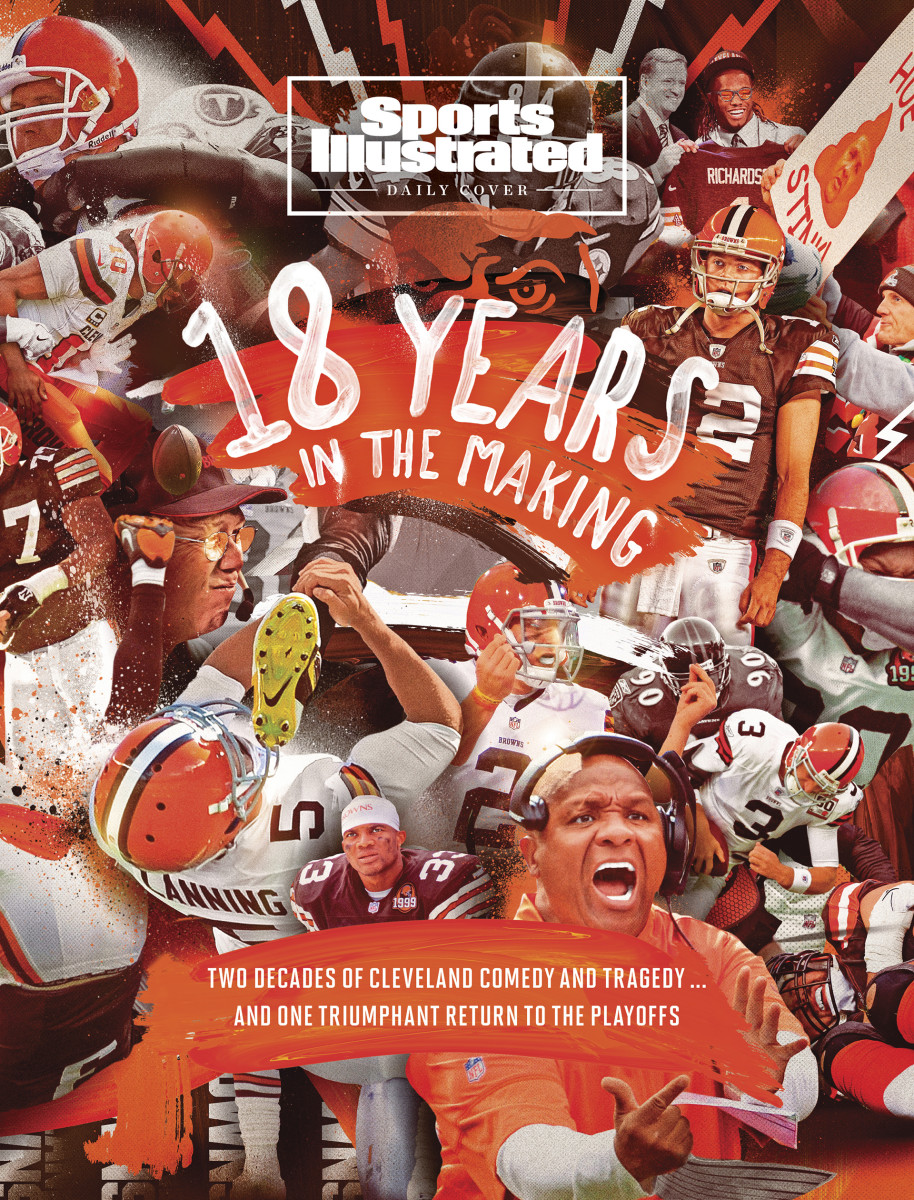
As it turns out, the guard on duty had opened the front door to take out the trash and a fan slipped in undetected.
“The next day,” Palmer says, “I had a buzzer underneath my desk.”
While there are many stories that perfectly summarize why the Browns have become synonymous with hard luck, poor decision making, an endless cattle call of quarterbacks and the kind of macabre twists and turns that are typically reserved for a premium television character in need of poetic justice, Cleveland’s humble re-beginnings in that office space served as the perfect metaphor for their road to this moment. You can literally build a franchise in a matter of months but neglect something both simple and integral to making it function properly (like security), leaving a disillusioned fan base feeling like there is nowhere else to turn. On it went, era after era, good, well-meaning coach after good, well-meaning coach, owner after owner, all with big plans and all without the foundational tract to lay them on.
This weekend, the franchise will make its first trip to the playoffs since 2002, ending the longest active drought in the NFL. And while they will be stumbling in under chaotic circumstances—head coach Kevin Stefanski and a handful of other coaches and players tested positive for COVID-19 on Tuesday, resulting in a disastrous scenario in which Stefanski and four assistants have to coach a critical week of practice virtually and will miss the game Sunday. They also arrive as a vastly different franchise than they were before. This time, the disarray is not a product of their own internal short-circuiting. The idea of a Browns front office aligned with its coaching staff, a capable face of the franchise quarterback with star power, and one of the youngest rosters in the NFL dotted with Pro Bowlers and exceptional, affordable mid-round talent would have been a fever dream just a few years ago. Now, it seems to be the culmination of a years-long uphill climb to make it here, to respectability and (relatively) calm waters.
Unsurprisingly, so many characters from their past are looking on with excitement (and prayer that Tuesday’s developments are not a sign of the decades-long curse evolving its twisted ways). To be a part of the Browns’ history from 1999 to now is to have both survived something and to have learned a valuable lesson about the sometimes-confounding machinations of the NFL—an intimate glimpse at why we’re all really here and why we are not. To meet the fan who snuck into the coach’s office is to understand how much the ultimate turnaround would mean.
“All that guy in my office wanted,” Palmer says, “was the best for the Cleveland Browns.”
* * *
Deconstruction. Walls going up and walls coming down. Push any two consecutive eras of Browns football together since their 1999 rebirth and they’ll resemble a home midway through a renovation program, stuck between the hopes and dreams of owners old and new. Palmer may have helped draw the blueprint, but this house was destined for the HGTV spin cycle. Time for an open concept.
This has been their ultimate curse—an uncanny ability to cultivate a modicum of good, fire the man in charge and wallpaper over its very existence. Talk to players from the Palmer regime and they’ll note a coach who helped them develop from wide-eyed college kids on an expansion team into confident young professionals, good enough to regularly compete with the division rival Steelers (Palmer still has the best winning percentage against Pittsburgh among new Browns coaches). Over the course of two years they learned how to exist in professional football and, in turn, were allowed to be treated as such with a wide breadth of personal freedom. Then, after two seasons, Palmer was fired and in came Butch Davis, fresh out of the University of Miami; his main objective was to run the Browns like a collegiate program. That meant players were no longer allowed to see their families on road trips. Everyone had to eat a team meal together and then lock themselves in a hotel room.
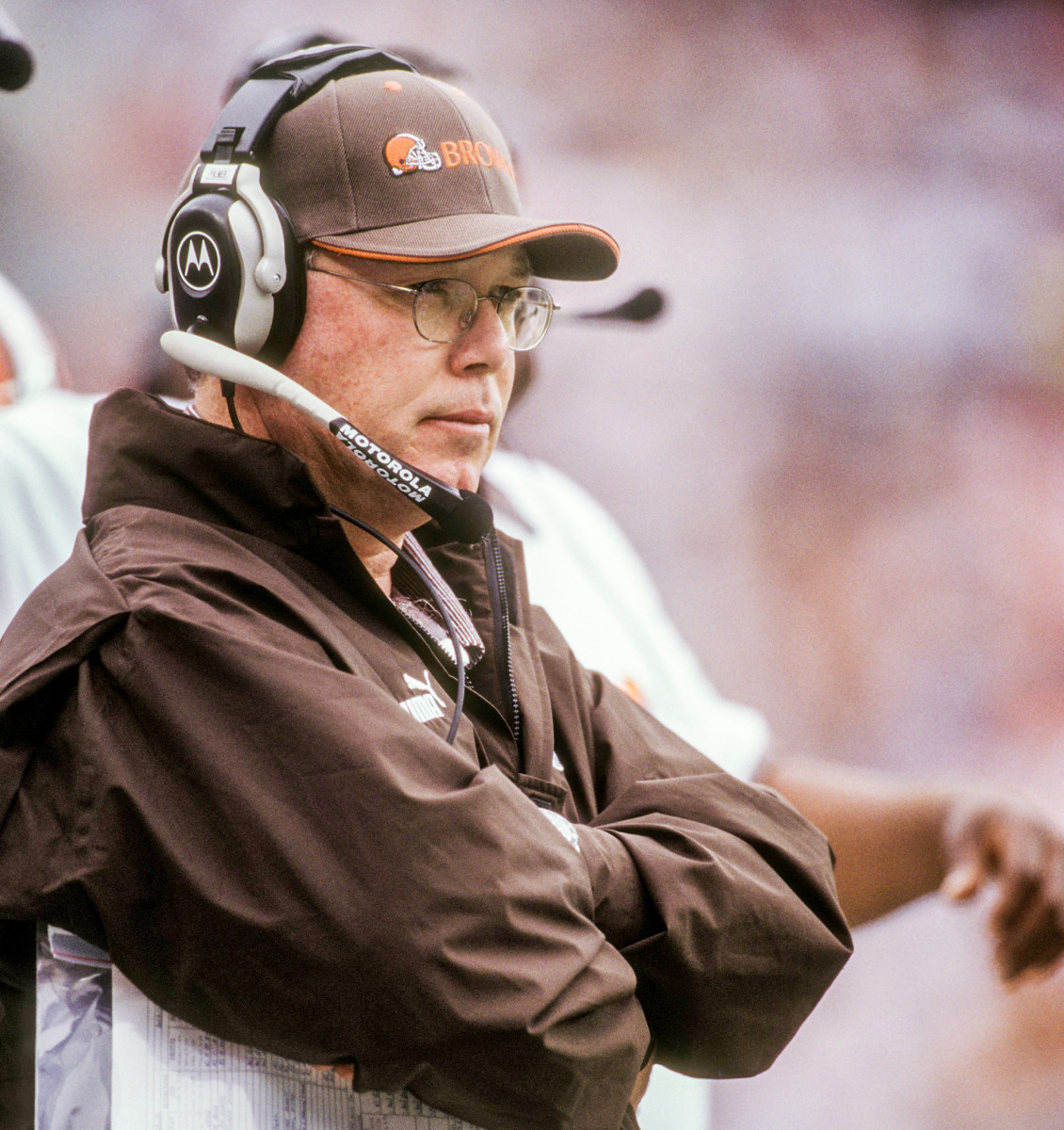
Practices were brutal. Davis had a leadership council but some on the team felt at an arm’s length. Browns ownership, in turn, imported everything from shoe shiners and barbers to car detailers with the stated purpose of creating a world where no one ever had the desire to leave. It was all about football. It was also a contraction; players growing into young men who had to accept being treated like teenagers again.
“We were so young and dumb and Chris Palmer was a ball-buster, but by the end of your second year he started treating us like pros. We started to get it,” says Kevin Johnson, the leading receiver in New Browns history. “Then Butch comes in from Miami and is running the thing like a friggin college regiment. It was like ‘Woah, time out, these legs are old now; you can’t be doing stuff like this.’
“Butch didn’t care if you had a pulled hamstring. You had to go. And the older guys were like, ‘Listen, this is not how you train as a professional.’ That’s when the team started getting broken up.”
The Davis regime began to find its stride, though, thanks to an all-star coaching staff that included future head coaches Chuck Pagano, Todd Bowles and Bruce Arians. The franchise made its lone playoff appearance in 2002, before subsequently deciding to strip the roster of its veteran talent. That playoff season was followed by 5–11, and Davis was fired after going 3–8 to start ’04. Another renovation. Another setback for a group of players who just two years earlier felt the slippery, 40 mph bus ride home from their postseason loss to Pittsburgh that year was the start of something important. Instead, it was another cliff from which the franchise would topple.
“You have windows in the NFL,” Kelly Holcomb says. “You get that nucleus together, we could have gone on a run for three, four, five years. But for whatever reason it got taken away from us.
“It’s just hard to believe it’s taken the Browns this long to get back. And you never think that. You never understand that when you’re playing. You never understand.”
Holcomb, the team’s quarterback for that 2002 playoff appearance and a spark throughout his four-year run in Cleveland, is comfortable with his place in Browns history. In his deep southern accent, he calls himself a “Brownie” and, like so many former Browns, juxtaposes his disappointment in their scattered array of eras, coaches and quarterbacks against the love he felt for the fan base that filled mall corridors and car dealership parking lots just to snag a minute with him during his time in Cleveland. They were always there for him and for the Browns.
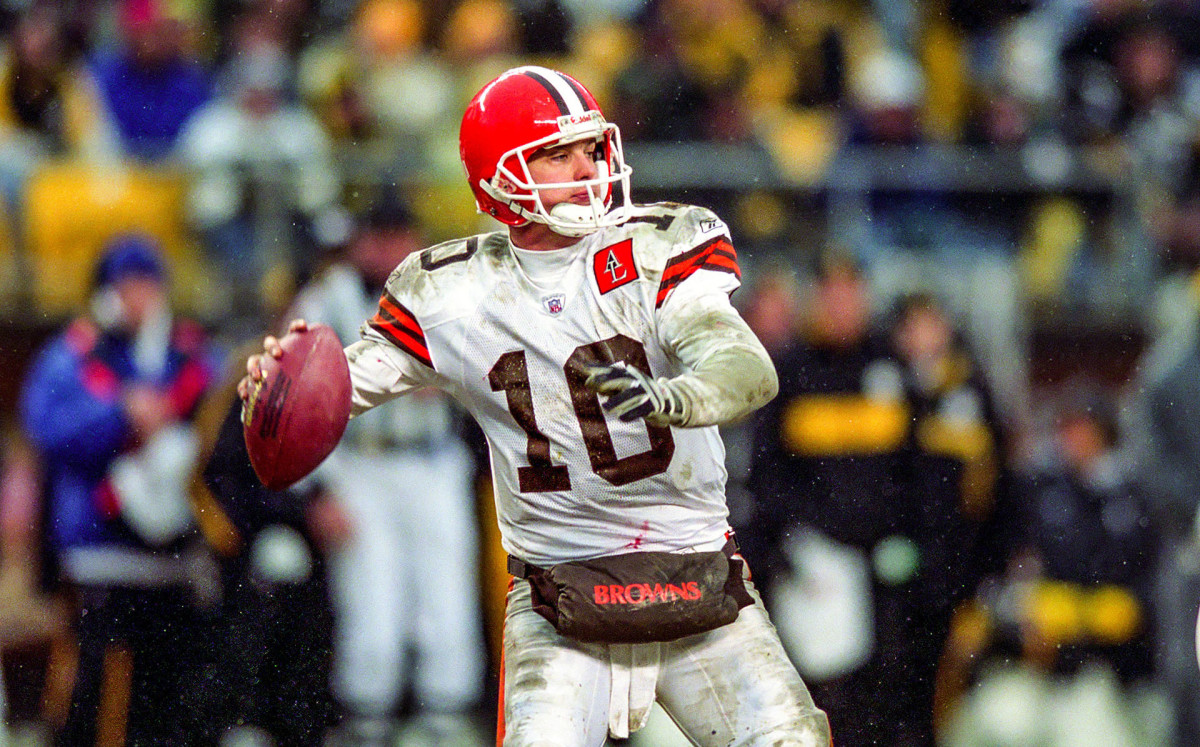
A few weeks back, as the Browns’ path to the postseason became clear, a friend of Holcomb’s invited him to a Browns Backers event near his home in Murfreesboro, Tenn., to watch Cleveland take on the Jets. The team’s fan community has chapters in just about every state, as well as two in the United Kingdom, one in Bangkok, two in Italy, one in Israel and one in Pretoria, South Africa. Holcomb planned on staying for a few minutes, waving hello and making an exit. Before he knew it, he’d been there for hours. It felt comfortable.
Shaun O’Hara, one of Holcomb’s teammates that year and an eventual Super Bowl champion with the Giants, still counts 2002 as one of the most memorable seasons of his 11-year career. After Cleveland beat the Falcons to clinch a playoff berth, he looked around at the fans who packed the lowest rung of seats, stretching their hands out to shake players’ hands as they walked off the field. Grown men in replica jerseys were weeping. No one wanted to go home. The players took laps, trying to shake every hand.
“Browns fans couldn't have a better name than the dog pound,” Johnson says now, reflecting on the steady fan support he’d received during his tenure there despite the wild vacillations inside the building. “Think about a dog ... they always come back and they want to love you.”

* * *
After Davis there was the Patriots phase; Romeo Crennel followed by Eric Mangini. After Mangini there was Pat Shurmur and after Shurmur there was Rob Chudzinski, a tight ends coach under Davis and successful coordinator under Crennel who starred during a crowded interview process because of his Ohio roots and tales of backyard football games where he imitated Brian Sipe. He was fired after one year.
Each season brought new coordinators, new ideas and new personnel. The ethos the club was refounded upon were so deeply buried beneath the walls it was unclear if they would ever find it again.
It was around that time new owner Jimmy Haslam brought in Eagles executive Joe Banner to act as his avatar in Cleveland; a boots-on-the-ground CEO who could negate Haslam’s frequent absences, inspect all of their processes and modernize an organization that had been throttled by all of the rebuilds; all of the constant construction.
Banner spent heavily on analytics. He worked to install a draft grading system that was successful in Philadelphia and copied frequently throughout the league. They primed the salary cap for a targeted spending spree down the road once the foundational aspects of the franchise (quarterback, pass protection, pass rusher) had been shored up. They conducted an in-depth study on what makes a successful franchise quarterback leading up to the 2014 draft, which ranked Teddy Bridgewater and Derek Carr as their two top targets based on their legwork. The idea was an end to the cosmetic spackling and paint. This was a chance to rediscover the foundation.
“We never really got a chance to develop a whole lot of that,” Banner says. After being hired at the end of the 2012 season, he was fired at the beginning of 2014. A few months later, the Browns picked Johnny Manziel in the first round of the draft.
Today, Banner wants to be clear that he’s not using this as an excuse, but shortly after he took the job and convinced many other people to follow closely behind for what was billed as the ultimate Browns rebuild, Haslam’s businesses were raided by the FBI. Banner spent hours talking to employees who were panicking about their jobs and the course of the franchise. He said at the time there was no solid information to operate under. Some even wondered if the sale of the franchise to Haslam would be negated, thus triggering a new owner and their own desires for yet another rebuild. Banner became a sponge for the concerns of new fathers and mothers, families who had just moved to Cleveland on the promise of new stability only to find old chaos.
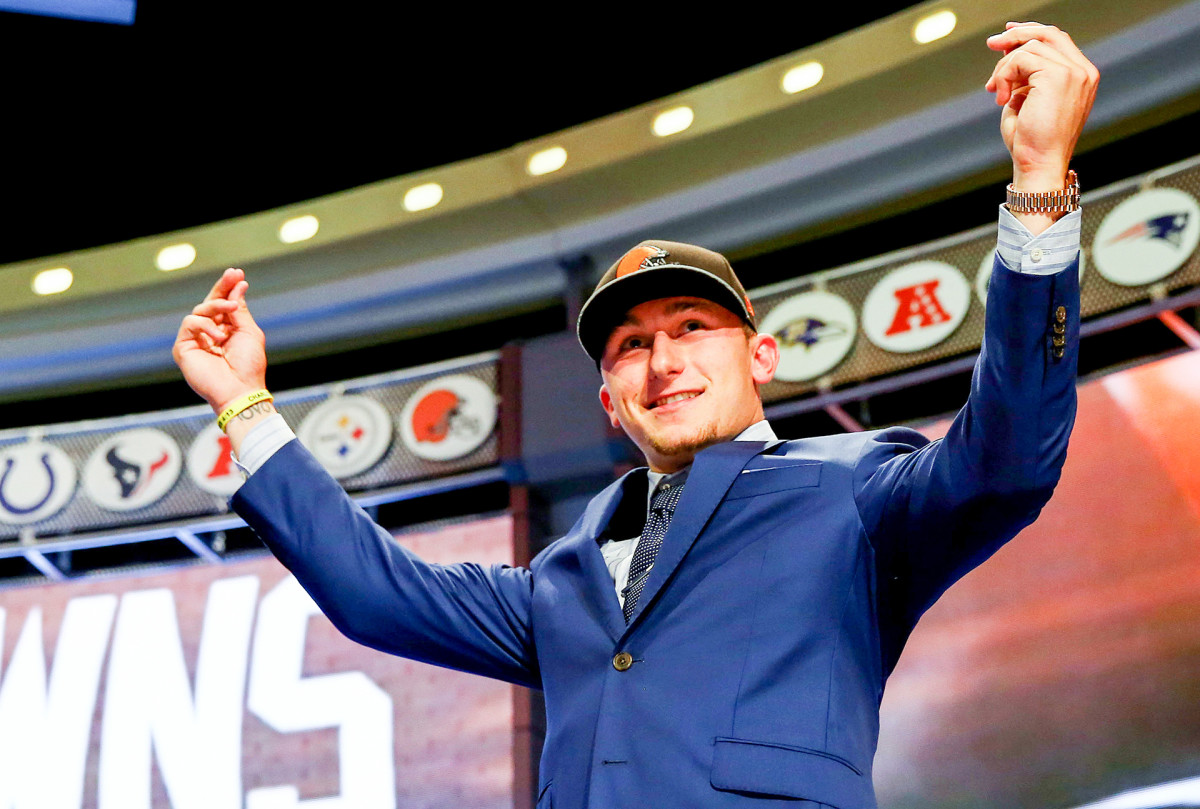
“It takes time to develop clarity on what your philosophy is that leads to winning,” Banner says. “And then hiring the right people and putting the organization together to do that. I wouldn’t have taken the job if I didn’t think he understood that … I think that he was maybe not on the same page as we thought he was to implement these plans and philosophies.”
Whether or not Banner’s tenure there was going to yield a winner, there was little doubt that his ouster and the hasty rebooting of another regime with Ray Farmer as general manager and Mike Pettine as head coach put the organization further away from a clean slate than it had ever been. The wiring, the plumbing, the various interconnected cells of the organization were so knotted and mangled that nothing could function properly. Pettine and Farmer made it two seasons before being let go. In the process, a staff that included future coaching stars like Kyle Shanahan was dissolved without much of a fighting chance.
* * *
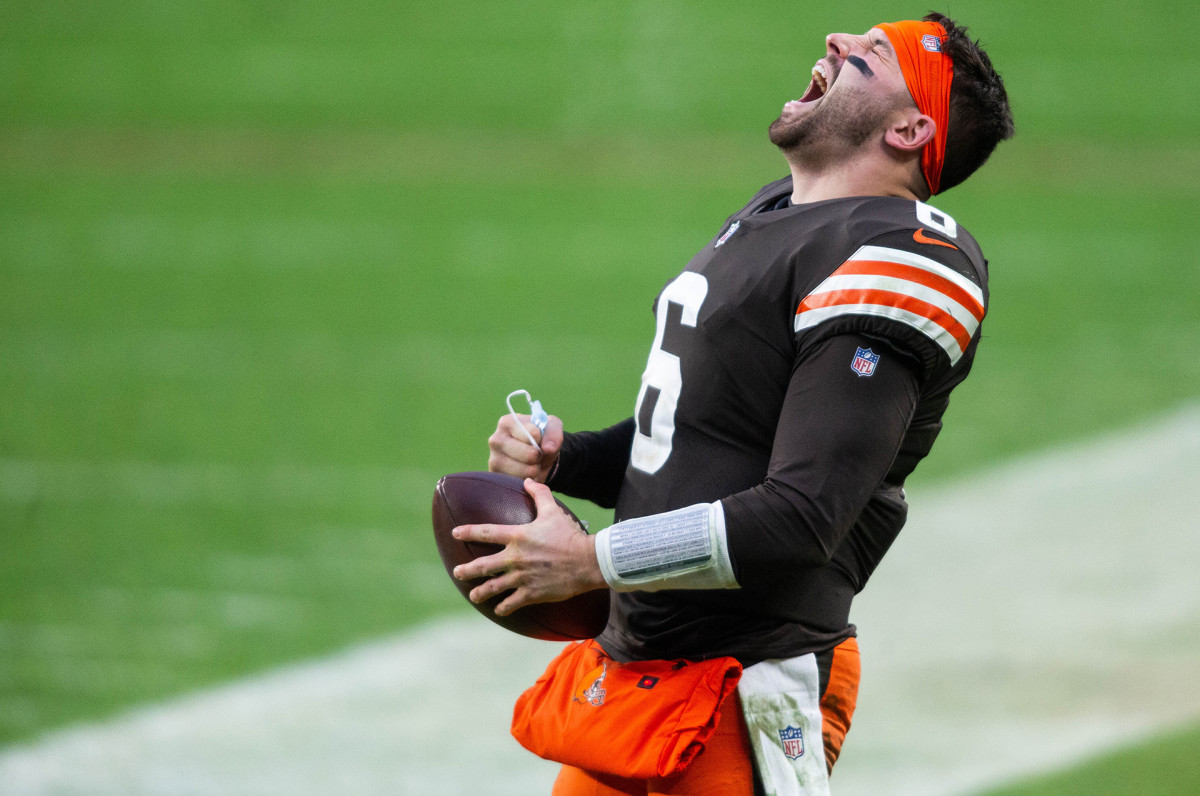
This dense and sordid history is what made Sunday’s win over Pittsburgh—a win-and-in de facto playoff game that Cleveland needed to break the drought—feel all the more liberating.
After the game there was Baker Mayfield, a franchise quarterback who survived yet another chaotic period in Browns history (the Hue Jackson, Gregg Williams and Freddie Kitchens regime, pocked by infighting, high-profile disagreements, interim coaches and on-field dysfunction) being asked about what it was like to walk off the field to the song “Cleveland Rocks” by the Presidents of the United States of America.
On the scoreboard, highlights of Bernie Kosar and Sipe, remnants of an older Browns era not associated with this level of turmoil, glared down at their new contemporaries. Mayfield swung his head back and took in the noise from a spartan, socially distanced crowd, breathing heavily like someone who was feeling a surge of emotional energy. He kissed a football and held it up in his left hand toward those who were waving.
Maybe now, this was no longer a project. Maybe now this didn’t have to be just studs and drywall; paint, wallpaper and title. Maybe for the Browns and their fans it was finally home.
“It’s a moment I’ll never forget,” he said.
